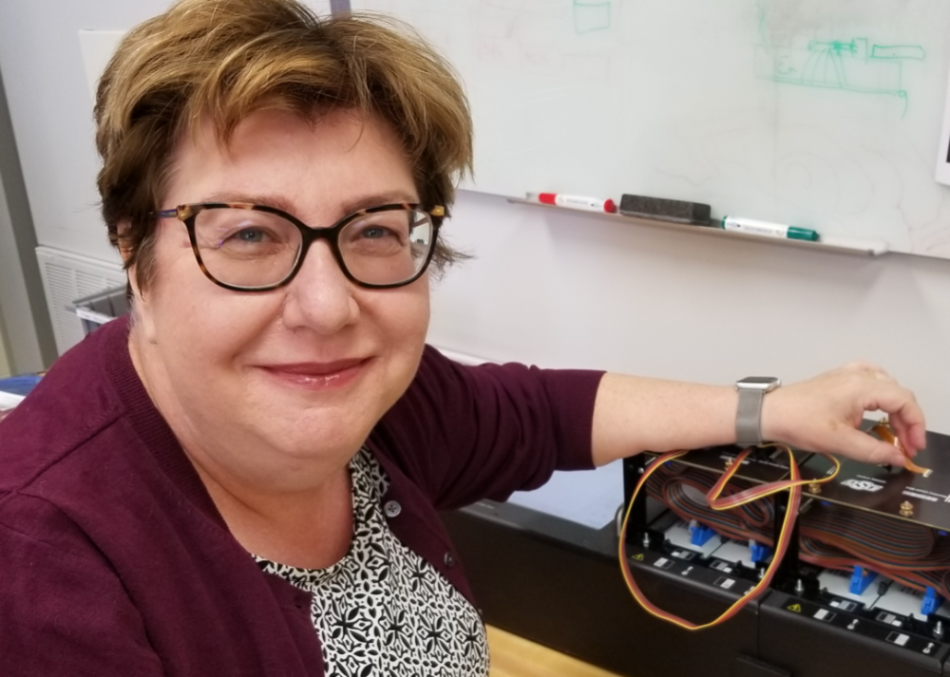Dr. Flera Rizatdinova
Department of Physics
I am a professor at the Department of Physics, and my research area is experimental high energy physics. I work closely with Prof. Alexander Khanov and Prof. Joseph Haley. We study the most fundamental aspects of nature, trying to understand what the origin of mass is, why there is so much matter and so little antimatter around us, and what is the dark matter that fills the universe. To address these kinds of questions, we make use of the largest experimental instrument in the world - the Large Hadron Collider (LHC), which is able to recreate the state of our universe shortly after the Big Bang. Our group is a member of the ATLAS collaboration that includes over 5000 physicists from around the world.
There are several aspects of particle physics that our group is particularly interested in. For one, we are studying the properties of the Higgs boson, a particle predicted half a century ago to explain the origin of mass, but only recently discovered at the LHC. We want to learn its properties to figure out if it indeed follows the rules prescribed by the current physics theory, the so-called “standard model.” One property of the Higgs boson that we want to measure is its self-coupling, a peculiar phenomenon related to the fact that the Higgs boson, while giving mass to other particles, is a massive particle and therefore also gives mass to itself.
Another area of interest in our studies is the search for new phenomena. We know that the standard model, while describing existing particle data with impressive accuracy, cannot be complete. In particular, the mass of the Higgs boson, while relatively large (about the mass of an iodine atom), cannot be explained in the standard model. One popular model that we are trying to probe, the so-called “supersymmetry” (SUSY), proposes the existence of a whole set of new particles that mirror the particles we already know. If discovered, chances are that this theory would nicely explain other puzzles of nature: in particular, the presence of dark matter. Another possibility to explain the hierarchy problem is the introduction of particles named “vector-like quarks.”
Extensive searches for new phenomena beyond the standard model haven't resulted in a discovery so far. One of the reasons might be that new particles may escape detection by flying far away from the point of LHC beam collision, where they were created. These particles, named “long lived particles,” may still be discovered at the LHC, but we need to be creative and develop new ways to detect their signals, different from techniques we are using so far.
Members of our group, participating in the development of a technique that is extremely useful for many physics analyses carried out at ATLAS, is called “b-tagging.” Among various physics objects that are detected in the ATLAS experiment, there are jets – collimated bunches of particles due to energetic quarks and gluons. Jets due to b-quarks, so called b-jets, are particularly useful because they appear in Higgs boson decays as well as in processes predicted by various beyond the standard model theories. We develop methods aimed at identification of b-jets that help to distinguish them from other types of jets that prevail in the LHC signal. We do so by investigating the trajectories of individual particles inside the jets using detectors that allow us to measure the particle positions with an accuracy of a few microns. We are also working on development of such detectors for the future iteration of the LHC, called the high luminosity LHC, where the intensity of colliding proton beams will increase manyfold. To do b-tagging under these conditions, we will heavily rely on modern data analysis methods, especially machine learning.
The group members are deeply involved in the tracker upgrade through hardware development and construction for the ITk pixel detector. In hardware, our group is responsible for the delivery of the part of the pixel detector electrical services and readout system that is called a type-0 service. These services include flexible cables connecting sensors to patch panels. The design of the flex cables is one of the most challenging tasks in the electrical services. We are also responsible for overseeing the electrical services integration in the pixel detector, and work on this task in close collaboration with several US universities and national labs teams.

